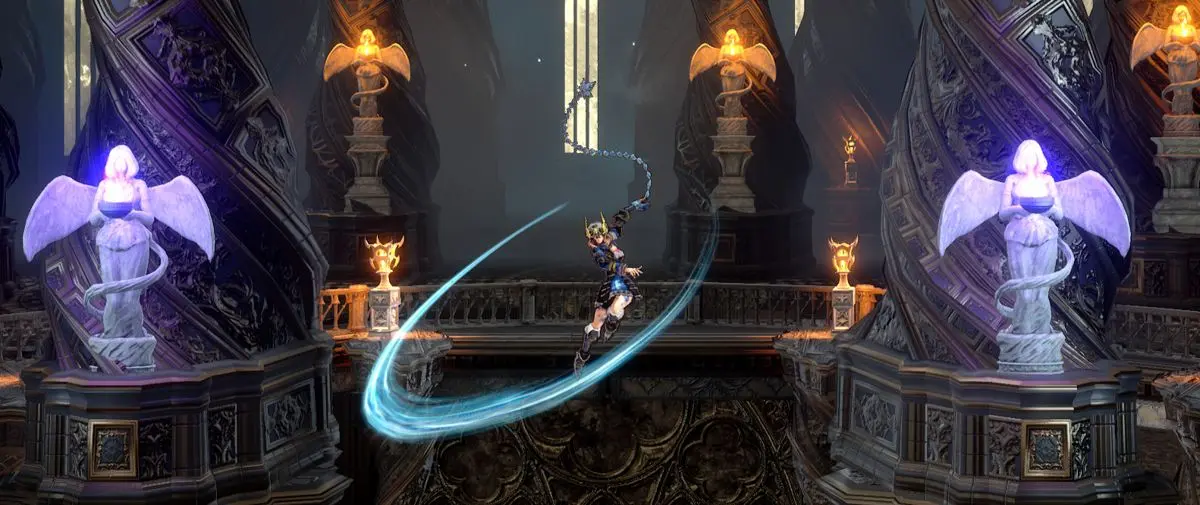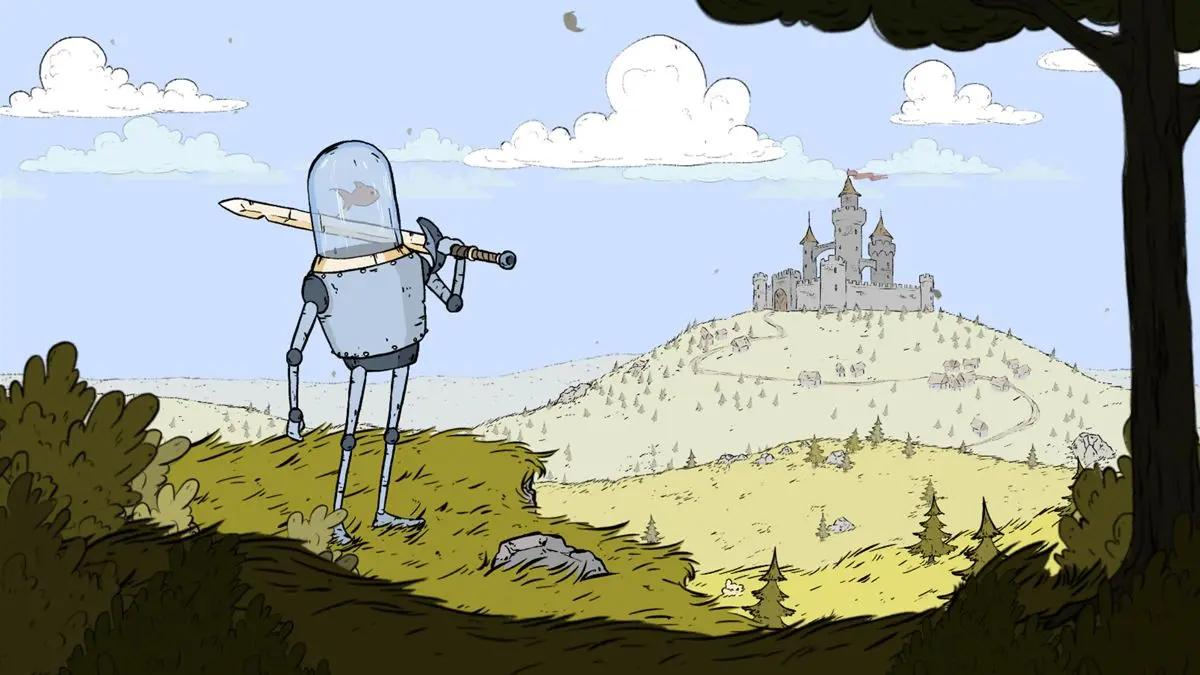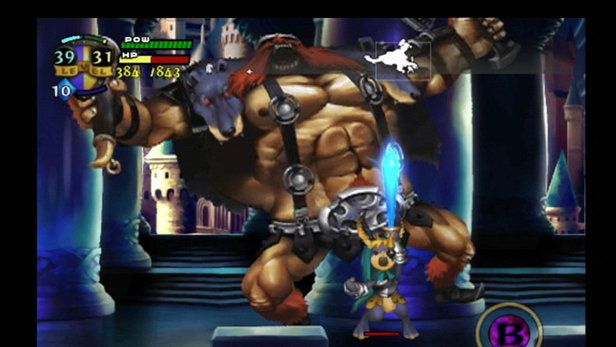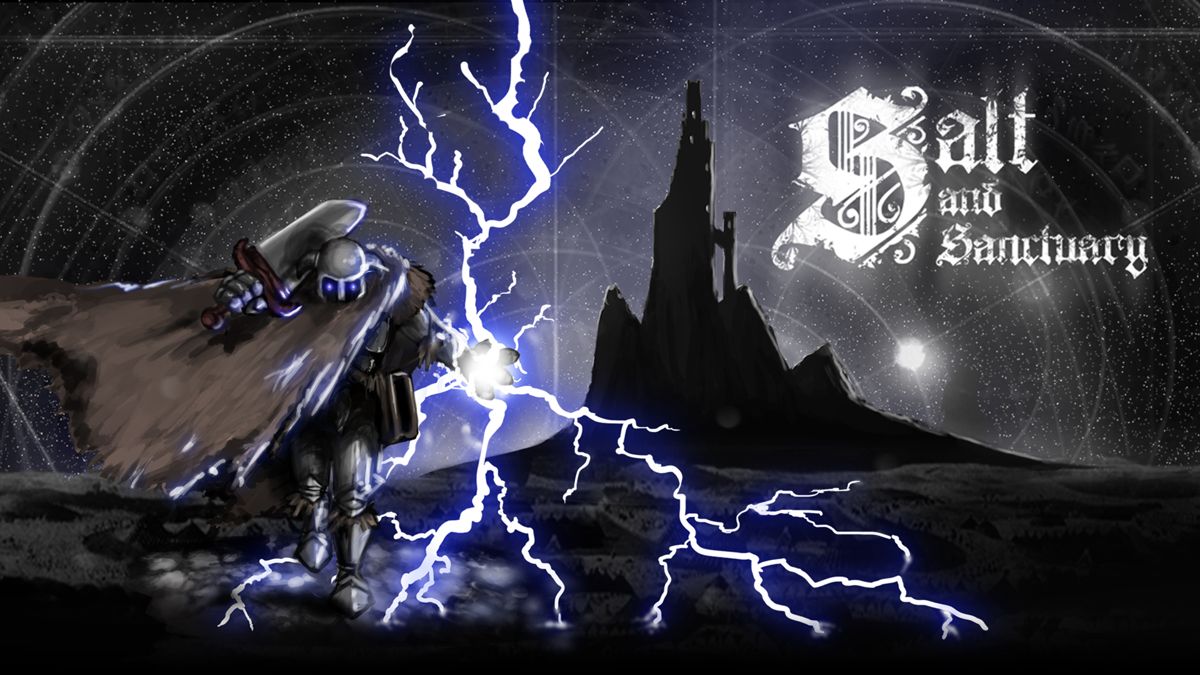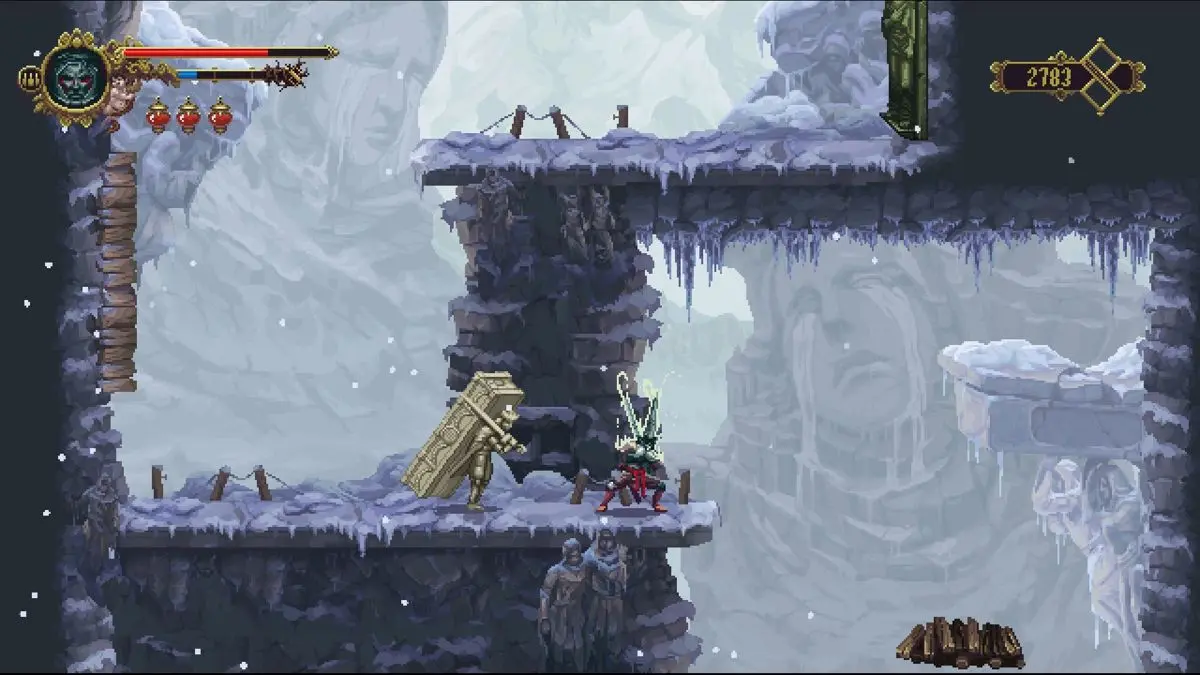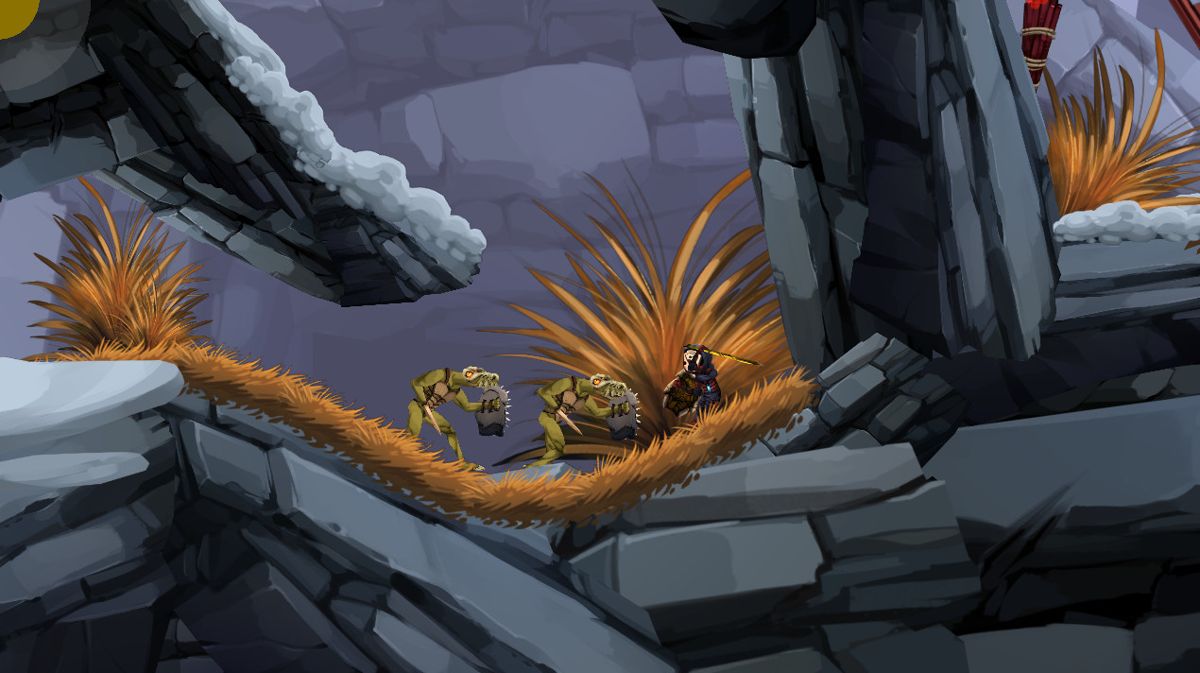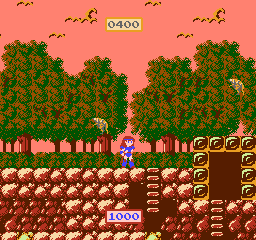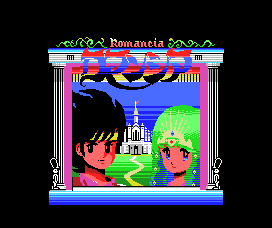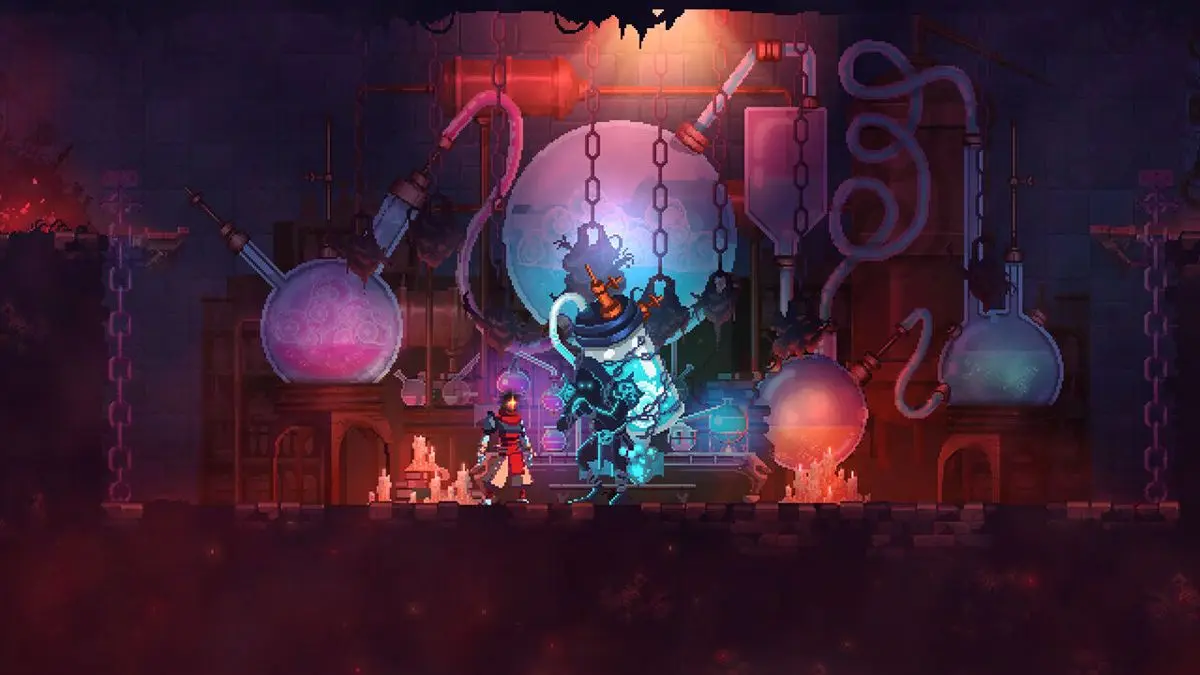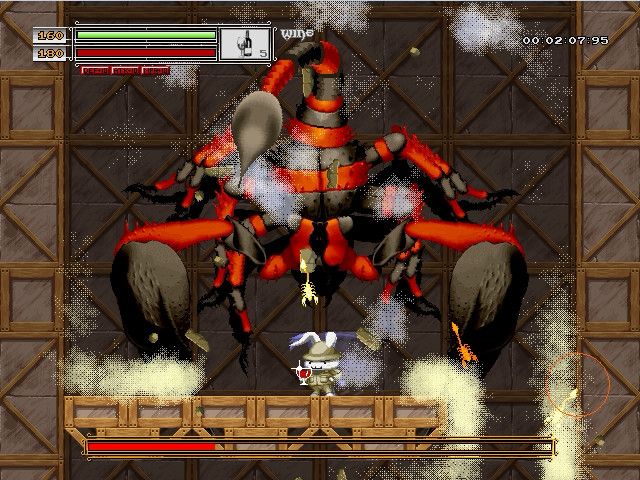Results
Bloodstained: Ritual of the Night
igavania, grindy, hidden areas
Bloodstained: Ritual of the Night is a critically acclaimed Metroidvania-style action-adventure game developed by Koji Igarashi, the godfather of the Igavania subgenre. Drawing inspiration from his work on the iconic Castlevania series, Igarashi has crafted a meticulously designed game that pays homage to the genre's roots while introducing fresh mechanics and elements. The game stands out for its intricate level design, featuring a vast and interconnected castle filled with labyrinthine passages, hidden rooms, and secret shortcuts. Exploration is rewarded with a wealth of power-ups, weapons, and equipment, allowing players to backtrack and access previously inaccessible areas in true Metroidvania fashion. Combat is a central pillar of the experience, with a diverse array of enemies that require strategic positioning and skillful use of various weapons and abilities. Bloodstained boasts a vast arsenal, including swords, spears, whips, and a variety of magical abilities, each with its own unique properties and attack patterns. One of the game's standout features is the Shard system, which allows players to equip and mix-and-match various abilities and passive bonuses, creating unique character builds tailored to their playstyle. This system adds depth and replayability, encouraging experimentation with different shard combinations. Visually, the game showcases a stunning art style, with meticulously crafted backgrounds that capture the gothic horror atmosphere. The attention to detail in the character designs and enemy animations is truly impressive, evoking a sense of nostalgia while maintaining a distinct and modern aesthetic. Overall, Bloodstained: Ritual of the Night is a must-play for fans of the Metroidvania genre, offering a challenging and rewarding experience that pays homage to its roots while introducing fresh ideas and mechanics that solidify its place as a modern classic.
Feudal Alloy
low fantasy, grindy, pixel art
No synopsis available.
Odin Sphere
fantasy, grindy, challenging
Odin Sphere, released in 2007 for the PlayStation 2, is a beautiful side-scrolling action RPG developed by Vanillaware. Known for its stunning hand-drawn visuals and intricate character designs, the game stands out with its captivating art style inspired by classical Norse mythology. The game's narrative is presented through the perspectives of five protagonists, each with their own unique storyline and motivations. These intertwining tales unfold in a non-linear fashion, allowing players to experience the overarching conflict from different angles. The storytelling is rich and emotionally resonant, exploring themes of sacrifice, love, and the consequences of one's actions. Combat in Odin Sphere is a highlight, featuring a unique and satisfying combat system that combines hack-and-slash elements with RPG mechanics. Players can unleash devastating combos and special attacks by carefully managing their Psyche Meter, which governs the use of powerful skills and transformations. Enemy encounters are varied and challenging, requiring strategic thinking and precise timing. One of the game's standout features is its intricate web of cause and effect. Decisions made in one character's storyline can have far-reaching consequences in another's, creating a sense of interconnectedness and encouraging multiple playthroughs to uncover the full scope of the narrative. While the gameplay is engaging, it's the game's visual artistry that truly sets it apart. Vanillaware's painstaking attention to detail is evident in every frame, with lush environments, intricate character designs, and fluid animations that bring the world to life. The game's aesthetics are further complemented by an enchanting soundtrack that perfectly captures the mythological atmosphere. Overall, Odin Sphere is a unique and captivating experience, blending masterful storytelling, engaging gameplay, and breathtaking visuals into an unforgettable journey through a world steeped in Norse mythology.
Salt and Sanctuary
platformer, low fantasy, high fantasy
Salt and Sanctuary is a challenging 2D action-platformer with a deep, interconnected world and Souls-like combat. Players must navigate a mysterious, hand-drawn world, overcome treacherous foes, and uncover the secrets of a forgotten land.
Blasphemous
platformer, low fantasy, grindy
Blasphemous is a challenging and atmospheric 2D action-platformer set in the dark, gothic world of Orthodoxia. Players take on the role of the Penitent One, a mysterious and tormented figure, on a quest to uncover the secrets of the Miracle and put an end to the endless cycle of death and rebirth.
Oblitus
fantasy, grindy, environmental puzzles
Oblitus is a psychological horror adventure game developed byRaz Games and released in 2015. Set in a surreal and unsettling dreamscape, the game explores themes of trauma, repressed memories, and the subconscious mind. The game distinguishes itself from typical horror fare by eschewing jump scares and overt violence in favor of a more cerebral and atmospheric approach. The narrative unfolds through symbolism and environmental storytelling, leaving much of the interpretation up to the player's perception and analysis. One of the standout features of Oblitus is its striking visual design, which employs a distinct, hand-drawn art style that blends elements of realism and abstraction. The environments are meticulously crafted and rich with symbolic imagery, inviting players to scrutinize every detail for clues and hidden meanings. The gameplay itself is primarily focused on exploration and puzzle-solving, with the puzzles often requiring lateral thinking and a keen eye for detail. The game also employs unconventional mechanics, such as the ability to manipulate and distort the environment in specific ways, adding to the surreal and unsettling atmosphere. What sets Oblitus apart from many other horror games is its emphasis on psychological depth and introspection. The game encourages players to engage with their own emotions and confront their own fears and psychological states, making it a thought-provoking and potentially cathartic experience for those willing to delve into its layers of symbolism and metaphor. Overall, Oblitus stands out as a unique and ambitious contribution to the horror genre, offering a cerebral and introspective experience that challenges players to confront their own psyche while navigating a hauntingly beautiful and deeply symbolic world.
The Wing of Madoola
fantasy, grindy, pixel art
The Wing of Madoola, released in 1986 for the Amstrad CPC and ZX Spectrum, is a unique and ambitious game that combines elements of side-scrolling action and open-world exploration. Developed by the small British studio Beam Software, the game stands out for its intricate level design, nonlinear gameplay, and surreal, dreamlike atmosphere. One of the game's most notable features is its vast, interconnected world, which encourages backtracking and exploration. The levels are not strictly linear, and players can often find alternate routes or hidden areas that lead to new challenges or power-ups. The game's world is also filled with bizarre creatures, twisted landscapes, and enigmatic structures that contribute to its surreal and otherworldly ambiance. The gameplay itself is a mix of platforming, combat, and puzzle-solving. Players control a winged protagonist who can fly, shoot projectiles, and interact with various objects and mechanisms. The combat system is relatively simple but requires precise timing and positioning, as enemies can come from multiple directions and attack patterns can be unpredictable. The game's difficulty is often cited as one of its defining traits. While the early levels serve as an introduction to the mechanics, the challenges quickly ramp up, requiring players to master precise jumps, intricate enemy patterns, and complex environmental puzzles. The game's cryptic nature and lack of explicit guidance add to the sense of mystery and challenge, as players must rely on their observation skills and intuition to progress. Despite its commercial and critical success upon release, The Wing of Madoola remains a relatively obscure title, known primarily to retro gaming enthusiasts and fans of the Amstrad CPC and ZX Spectrum scenes. However, its influence can be seen in later games that embraced nonlinear, exploratory gameplay and surreal, dreamlike atmospheres.
Romancia: Dragon Slayer Jr.
fantasy, grindy, environmental puzzles
Romancia: Dragon Slayer Jr. is a side-scrolling action role-playing game developed by Nihon Falcom and released for the Super Famicom in 1994. As a spin-off of the Dragon Slayer series, it blends elements of traditional action platformers with RPG mechanics. One of the game's notable features is its nonlinear level design, allowing players to explore the interconnected world and tackle areas in different orders. This open-ended approach encourages backtracking and revisiting previously inaccessible areas as the protagonist, Lyle, gains new abilities and equipment. The combat system incorporates both real-time action and turn-based elements. Players can freely move and attack enemies in real-time, but certain abilities and spells are executed through a separate menu-based system, adding a layer of strategy to the otherwise fast-paced combat. Romancia: Dragon Slayer Jr. also features an extensive character progression system, with various skills, spells, and equipment to acquire and upgrade. Lyle can learn new abilities by finding and equipping specific gear, encouraging players to experiment with different loadouts and playstyles. The game's world is filled with hidden secrets, optional bosses, and challenging dungeons, catering to players who enjoy exploration and seeking out optional challenges. Additionally, the game features multiple endings, incentivizing replay value and encouraging players to uncover all the game's secrets. While the game's graphics and audio were impressive for its time, Romancia: Dragon Slayer Jr. is particularly noteworthy for its innovative fusion of action and RPG elements, as well as its emphasis on nonlinear exploration and character progression.
Dead Cells
platformer, grindy, environmental puzzles
Dead Cells is a critically acclaimed roguelike action platformer developed by Motion Twin. While the game features procedurally generated levels, a hallmark of the roguelike genre, it distinguishes itself with its exceptional combat system and tight controls. The game's combat mechanics are highly praised for their fluidity and responsiveness. Players can seamlessly chain together various attacks, dodges, and parries, creating a combat flow that feels both challenging and deeply satisfying. The game features a vast array of weapons, each with unique movesets and playstyles, allowing for significant replayability and experimentation. One of Dead Cells' standout features is its unique cell-based progression system. Instead of a traditional leveling system, players collect cells from fallen enemies and use them to unlock permanent upgrades and new equipment blueprints. This system encourages players to explore and take risks, as the rewards can significantly enhance their capabilities in subsequent runs. The game's art style is a blend of pixel art and hand-drawn elements, creating a visually striking and distinct aesthetic. The levels are intricately designed, with intricate details and environmental hazards that add depth to the gameplay experience. Dead Cells also features a robust customization system, allowing players to tailor their gameplay experience by selecting various mutations and equipment loadouts. This system encourages experimentation and provides a high degree of replayability, as players can discover new synergies and strategies with each run. Additionally, the game offers a variety of challenging boss encounters and optional content, such as secret areas and hidden paths, which cater to players seeking an extra level of difficulty and exploration. Overall, Dead Cells is a meticulously crafted action platformer that combines tight combat mechanics, a unique progression system, and a visually stunning art style, offering a highly replayable and challenging experience for fans of the roguelike genre.
Pharao Rebirth+
grindy, environmental puzzles, hidden areas
Pharao Rebirth+ (2016) is a remastered and expanded version of the classic city-building game Pharaoh, originally released in 1999. Developed by Traxis Games, this modern iteration aims to capture the essence of the original while introducing various enhancements and new features. Here are some key aspects of Pharao Rebirth+ that go beyond the basics: 1. Expanded Campaign: In addition to the original campaign, Pharao Rebirth+ includes an all-new campaign set in the later periods of ancient Egyptian history. This campaign spans multiple missions and introduces new challenges, such as managing trade routes and dealing with external threats. 2. Enhanced Graphics and User Interface: The game's visuals have been overhauled, with higher-resolution textures, improved lighting, and a more modern and intuitive user interface. The updated graphics not only make the game more visually appealing but also improve readability and accessibility. 3. Modding Support: Pharao Rebirth+ introduces modding capabilities, allowing the community to create and share custom content, such as new buildings, scenarios, and gameplay modifications. This feature extends the game's longevity and replayability. 4. Scenario Editor: Players can now create and customize their own scenarios using the built-in scenario editor. This tool allows for fine-tuning various aspects of the game, including terrain generation, resource distribution, and objective settings. 5. Improved Pathfinding and AI: The game's pathfinding and AI systems have been enhanced, resulting in more efficient resource distribution, worker management, and decision-making by the game's non-player characters (NPCs). 6. Multiplayer Functionality: While not a core feature, Pharao Rebirth+ includes basic multiplayer capabilities, allowing players to engage in cooperative or competitive play over a local network or the internet. 7. Additional Quality-of-Life Improvements: The remastered version includes numerous quality-of-life improvements, such as hotkeys, camera controls, and the ability to pause and resume gameplay, making the overall experience more streamlined and user-friendly. Overall, Pharao Rebirth+ aims to breathe new life into the classic city-building game while staying true to its roots, catering to both nostalgic fans and newcomers to the genre with its expanded content, visual enhancements, and modern gameplay refinements.
Filters
Search Term
Properties
Platforms
Tags (include)
Tags (exclude)
Get Your Game Noticed
Advertise your game with MetroidvaniaDB and reach a community of people who know exactly what they're looking for:
Your game.
Native & Banner Ad Spots
Multi-week Discounts
Game Launch Packages
Discounts for Indie Developers

